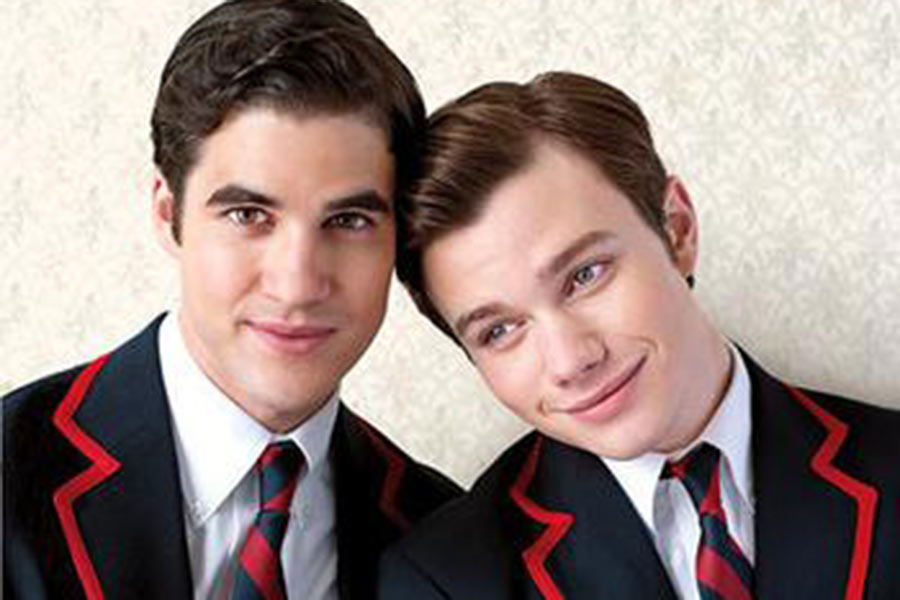Here’s the thing with representation of any kind: Not everyone is going to be happy.
People will analyze characters for any type of stereotypes and there’s always someone of a certain “category” left out of the picture, meaning there’s always room for expansion. Nowadays, however, it is refreshing to see a number of LGBT characters represented in the media, especially without their major character arc being “coming out.” It’s just simply a factor in their life. This article will be used to scratch the surface of some of the media representation around today (that this writer has personally seen and can report) and where it can go moving forward, and even where it has taken steps back.
Years ago, a little show started called “Glee,” which many might say was able to bring some of the struggles of gay youth to conventional young audiences, in the form of the likable, fashionable Kurt Hummel. While gay characters were hardly nonexistent from television before, it was still a rare occurrence to see them on the TV screen, particularly on a show aimed at a more youth-driven audience. However, it’s funny to think, as one article also mentioned, how seeing a gay character like Kurt nowadays might be considered more of a step back, showing a more stereotypical gay. While I don’t 100-percent agree with that point, I see where he was coming from.
Leading from that, I’d like to discuss one show with the least amount of stereotypical gay men you could find: HBO’s (very unfortunately canceled) gay-centered series “Looking.” The show followed three gay men in San Francisco through their romantic and professional ups and downs. What I loved about that show, at least personally, was its ability to reflect a modern gay experience that was funny, thought-provoking and seemed genuine. Nobody was perfect but they weren’t exactly bad people — just people who made some bad decisions.
But it’s that word — “people” — that made me fall in love with it so much. It didn’t stereotype but it didn’t take itself too seriously and brought out some wonderful characters, including some rarely found ones, most notably the HIV-positive bear Eddie, who was funny, flirty and a joy to have on screen. While, yes, I think it could have been perhaps done a bit more in the way of diversity, “Looking” spent so much time developing these people that I could forgive it. What I can’t really forgive is HBO’s decision to end the show, which leaves, quite frankly, a gaping hole in LGBT representation in media. While HBO said the show was cancelled because of low ratings, I’d like to think that the money and revenue brought in from “Game of Thrones” alone would be able to keep several smaller shows of HBO’s afloat, particularly as it wasn’t that expensive to make. I mean, is five hours of a couple of gays in San Francisco really going to cost more than five minutes of dragon battles? C’mon, HBO. Now they are making a televised movie to wrap up everyone’s stories; as a viewer, I feel as though they may not bring it to a satisfying conclusion and instead it will be rushed.
Nowadays we are able to enjoy and have new complex and layered characters whose sexuality is of a secondary nature. Like in the wonderful (and yet canceled) show “In the Flesh,” where the main character is a zombie and gay — but mostly focused on the former. Gay characters, especially gay leading characters, are rare to find in the horror genre (gay leading characters themselves are a dime a dozen) and yet it is such a minimal part of his identity. In fact, when the main character brings his boyfriend home to his parents, the tension arises not from homophobia but instead from prejudice against zombies (the concept of the series takes a bit to explain. Google it — you won’t regret it).
We also have Cyrus Beene from “Scandal,” the White House’s gay Republican chief of staff whose brutal, and many times immoral, methods make him one of the most interesting characters on the show. Then there’s Connor Walsh in “How to Get Away with Murder,” whose cocky, flirty attitude makes him an easy fan favorite who is able to do something that many gay characters don’t — use their sexuality as a weapon for them, instead of it being seen as a weapon against them.
A truly great example is Omar Little in “The Wire,” who breaks many stereotypes of gay men, as he is a tough street gangster whose very presence sends people running. And let us not forget the many members of the cast of “Orange is the New Black,” whose different backgrounds and ethnicities are able to show a diversity of experience befitting the LGBT community in general.
In terms of moving forward, I think the trans movement needs to have a bigger presence on the screen. While we do have some great characters and representation, like in the TV series “Transparent” and Laverne Cox on “Orange is the New Black,” they are still Internet-provided shows and haven’t hit more cable-network roles that would reach out to wider audiences. I also think more diversity is a key factor, in being able to showcase a wider circle of characters of backgrounds and diversity, like for example more positive HIV-positive characters.
Diversity and representation are part of a long hill, with different paths that aren’t always taken. We can hope and look for examples and do our best to show support for different stories to be told. And we can work to allow not only our own voices to be heard but also those whose stories haven’t been given the opportunity to shine.
Sean Morris is a junior at Science Leadership Academy.
